

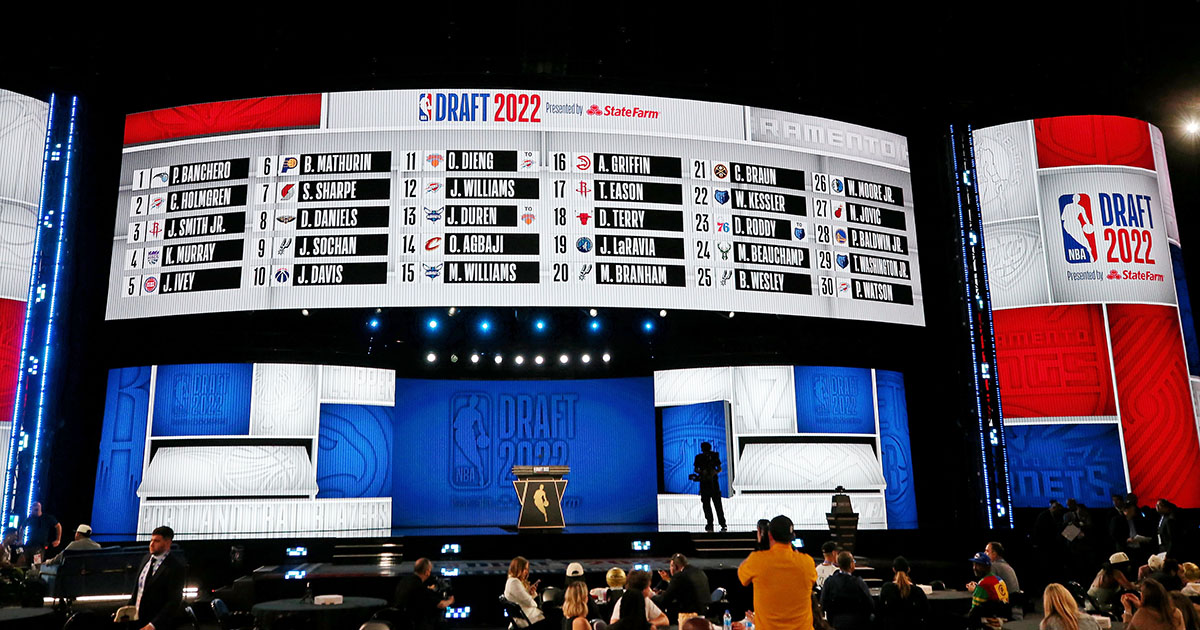
The NBA Draft is just days away, and the hype continues to build around an uncertain order. It appears every team values different players and that could lead to widespread gaps in the opinion of each pick on Wednesday and Thursday.
Beyond the first round, and even the second round, there are even more players looking to catch the eye of an NBA franchise. Some will receive two-way contract offers while others receive invites to offseason camp or the Summer League festivities where they will get another chance to impress.
Here is how the Top 100 prospects in the 2024 NBA Draft stack up as the talk ends and the selections begin.
Donovan Clingan saw his stock skyrocket during the NCAA Tournament as he increased his minutes and provided UConn a dominant interior presence. However, the journey to becoming one of the top prospects in this class started well before March. The 7-foot-2 center has great size and impacts how opponents approach the rim when he is able to camp near the basket. During the national championship run, the biggest improvements were his conditioning and movement.
Clingan’s range continues to be a topic of discussion given the centers on each roster of the lottery teams, but trade rumors which have built up steam should get him off the board early regardless.
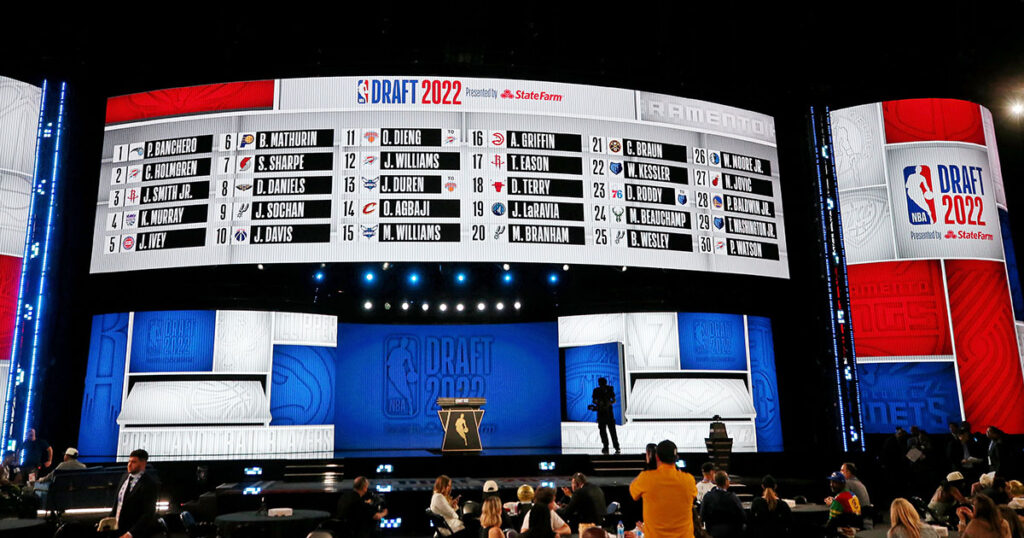
Alex Sarr has shown himself to be one of the prospects with the highest upside while playing in the NBL. Playing in a league with established professionals, his tools on both ends of the floor suggest he is ready to play in the NBA and could quickly develop into the next versatile big man. The 7-foot-1 center offers many of the things NBA teams are looking for at this position. He shot 52% from the field and 29.8% from 3, but shows good form on his jumper.
Sarr has still not worked out with the Atlanta Hawks, with Zaccharie Risacher and Donovan Clingan drawing interest for the top spot. Regardless of where the Hawks go, he will not have to wait long to hear his name called.
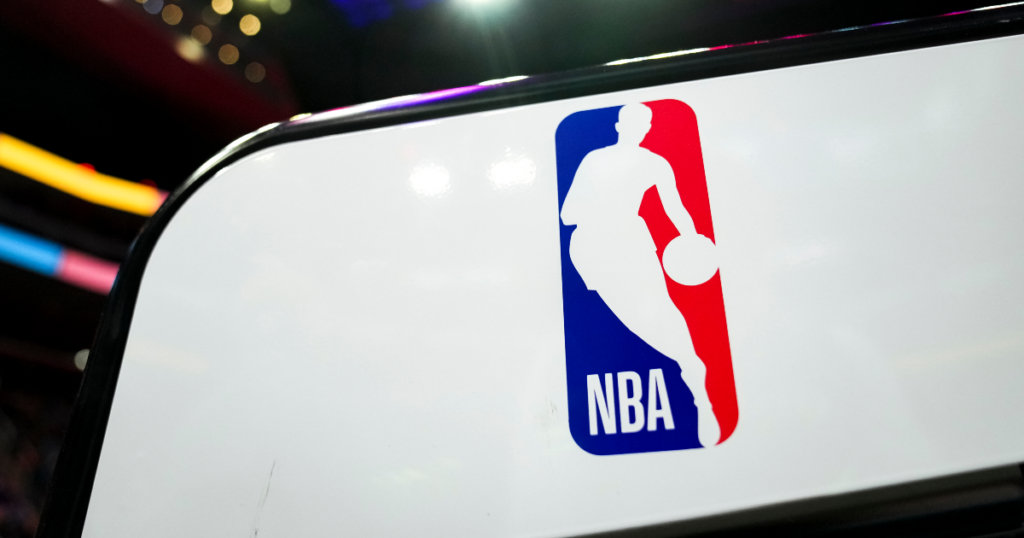
Zaccharie Risacher gained momentum when he went on a tear behind the 3-point line. The number has since come down — to a still impressive 42.6% — while still showcasing what NBA teams want to see from a 3-and-D prospect. The 6-foot-8 forward has great length and promises to fill out his frame. He works off screens and cuts to the basket well, which should provide him an immediate role as the shooting percentage evens out.
Risacher is in the same spot as Sarr and Clingan at this point, competing for the top spot in the NBA Draft without much concern that he will fall after a strong playoff performance to conclude his season.

Reed Sheppard is likely the best shooter in the NBA Draft this year, knocking down 52.1% on 4.4 attempts per game. The ability to also contribute as a playmaker and rebounder gives him one of the highest floors. In addition to the 6-foot-3 guard’s established offensive impact, he is an intriguing defensive prospect. He boasts great numbers while often gambling for steals. This approach could look drastically different based on the defenders he plays with in the NBA.
Sheppard also sits in an interesting spot as teams look to move around the board. He seems to fit well with a number of the potential suitors and has a skillset which helps him pair with any type of teammate.
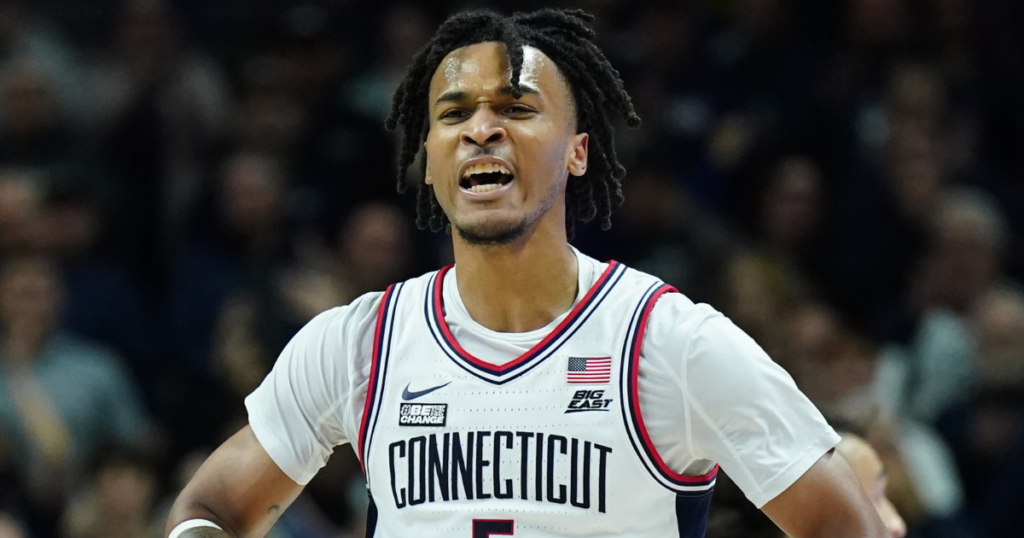
Stephon Castle showed off the mentality NBA teams will covet, coming in to help UConn defend its championship as a complementary piece. Within that role, he demonstrated an ability to play either guard spot. The biggest question surrounding the 6-foot-6 playmaker is how well his shooting will translate to the next level. He shot just 26.7% from 3, not well enough to garner respect from professional defenders.
Reports of Castle wanting to play point guard in the NBA have circulated and created conversation, but plenty teams have a need he projects to fill up top.
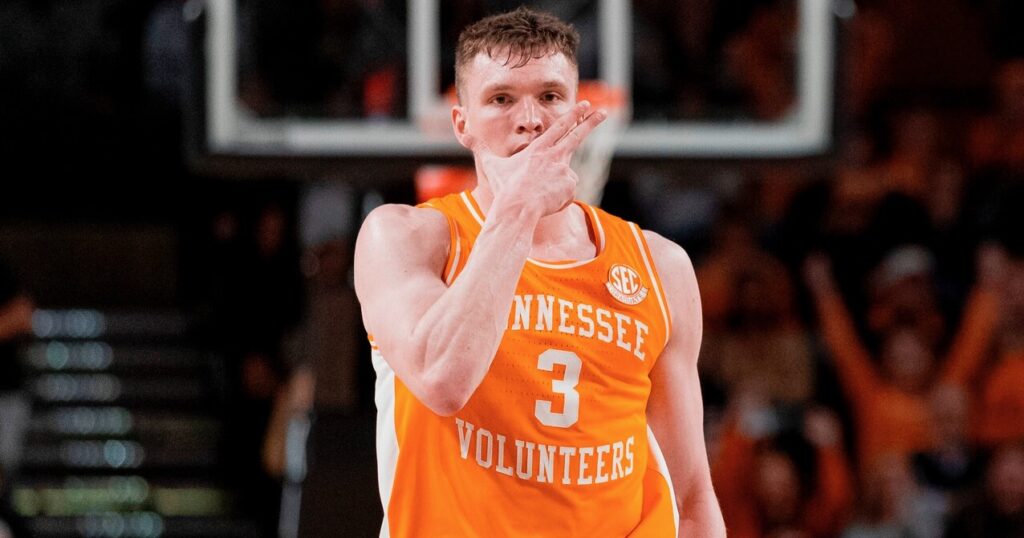
Dalton Knecht left no doubt that he can score the basketball at any level. Upping his production while moving from Northern Colorado to Tennessee makes him one of the highest floor players on offense. The 6-foot-6 wing will now go head-to-head with athletic defenders more often in the NBA, giving him another area to grow. He improved defensively, but still has questions to answer on that end as well.
The market for Knecht promises to develop as the order becomes clear, but ahead of trades it remains unclear what the best fit will be for him or the teams picking in his range.
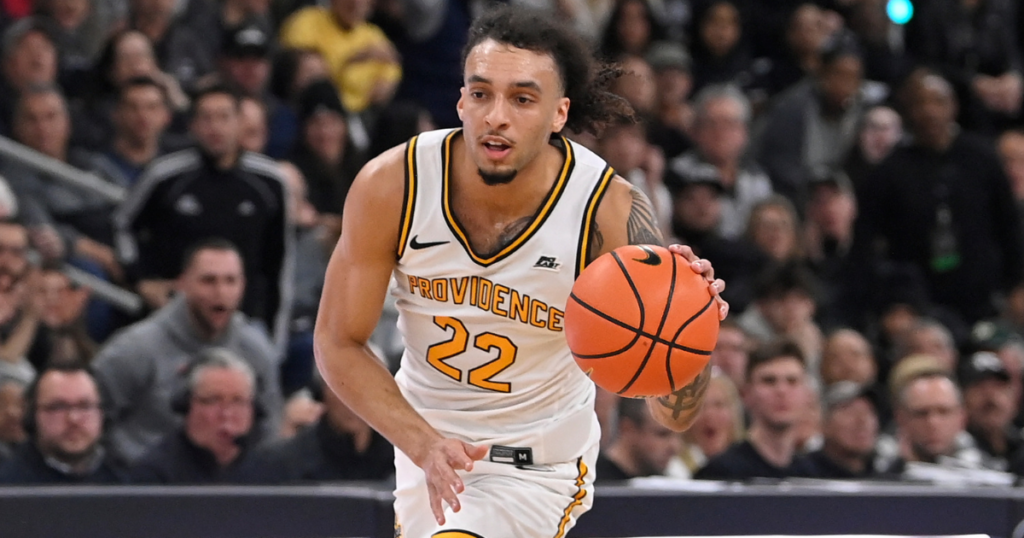
Devin Carter took over full responsibility for Providence this season when his teammate went down with injury. The emerged into the Big East Player of the Year and boosted his draft stock more than any other prospect. The 6-foot-3 guard contributed 8.7 rebounds and 3.6 assists per game, making an all-around impact which extended to the defensive end as well. All this, paired with the fact he comes from an NBA family — son of Anthony Carter — will make him a front office favorite.
Carter has risen up boards consistently during the pre-draft process after a strong NBA Combine performance which propelled him to a likely lottery pick.
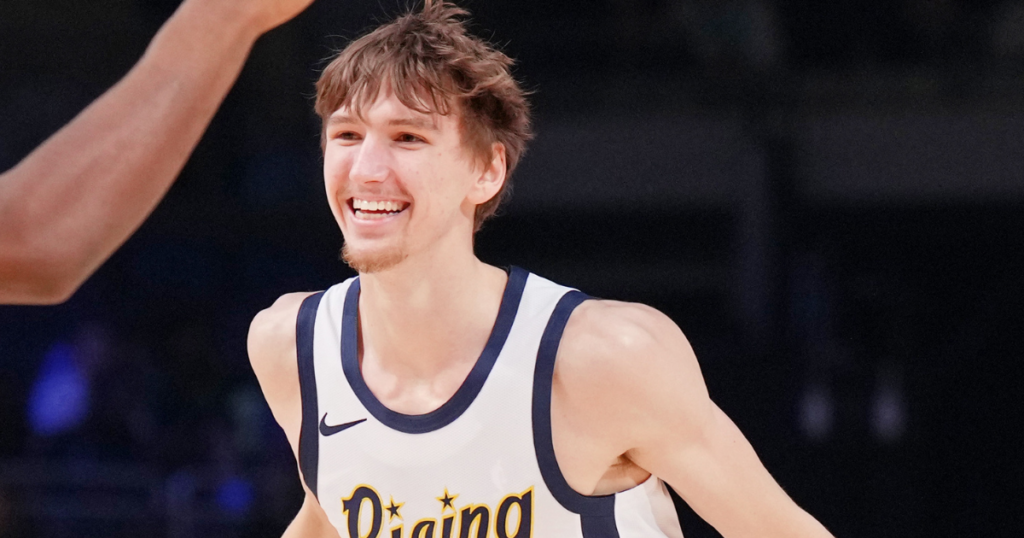
Matas Buzelis entered the season as one of the top prospects, but injuries and a general struggle which plagued the entire G-League Ignite team dropped his stock significantly. The 6-foot-10 forward has skills which promise to translate well to the NBA, but he is likely not ready to make an immediate impact. Shooting just 22.2% from 3 also leaves question marks he must answer.
The Buzelis market has not been one that has drawn widespread movement to this point, as he remains steady in where he has been projected to land.
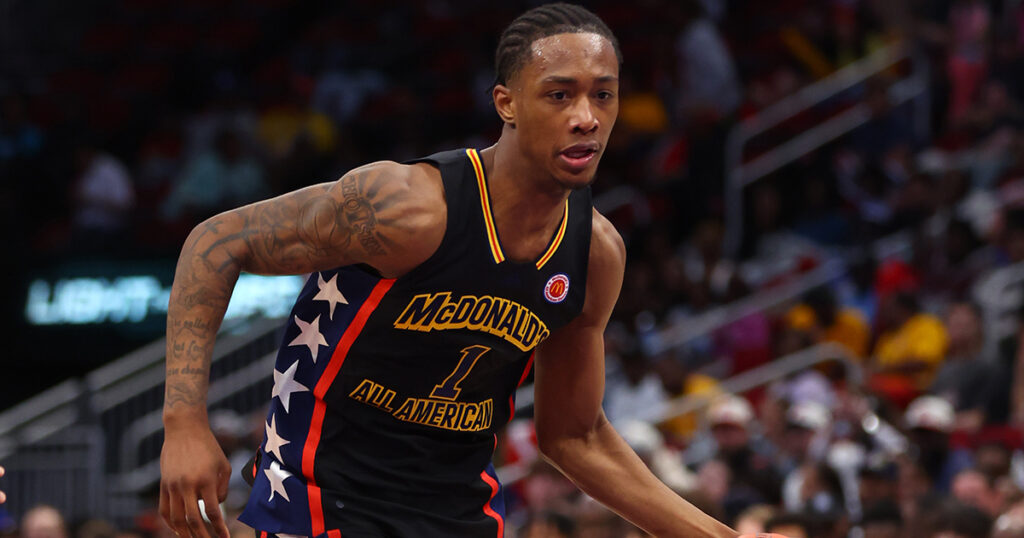
Ron Holland was also part of the disastrous G-League Ignite season which saw every player’s stock fall. Poor efficiency numbers on both ends of the floor hurt Holland, who was on the floor as much as any of the young prospects involved. The 6-foot-8 forward held an offensive rating of just 93, and a defensive rating of 115. How much of his struggle can be undone while playing within an NBA rotation remains the question, and some team is going to gamble on his upside.
The conversation surrounding Holland is another wide mark given his pedigree and struggles, but is still in the mix for a lottery spot.

Tidjane Salaun is among the most difficult prospects to pin down based on his low usage this season. The potential to get an athletic, long forward with shooting touch will draw in many. Questions remain how large of a role the 6-foot-9 forward can take on offensively, and what he will look likely matched up with NBA-caliber offensive players in space. At the end of the day, someone will bet on upside.
Salaun’s stock is on the rise after a strong finish to the season and continued discussion about his long-term fit as an NBA player.
11. Nikola Topic, Serbia
Nikola Topic started the year strong as a balanced playmaker who showed upside as a shooter based on his 87.1% from the free throw line. However, an injury derailed his season as he reached a higher level of competition. The 6-foot-6 guard fits the mold of a playmaker with size which has become coveted around the NBA. He must take the next step as a scorer to reach his potential, but could immediately help initiate offense.
The market for Topic has also been a topic of conversation over the past month, with a partially torn ACL discovered after his second knee injury of the year drawing concern.
12. Isaiah Collier, USC
Isaiah Collier struggled early in the college basketball season, but quietly turned things around and finished well after an injury. He dropped down draft boards and has not been able to fully recover, perhaps influenced by the disappointment surrounding his team. The 6-foot-5 guard is capable of initiating the offense, and could continue building on his improved efficiency numbers. The No. 1 player in the On3 Industry rankings has plenty left to unlock.
Similar to Collier, there is some conversation about how the pre-draft process could bring Collier closer to his projected slot before a tumultuous season than after.
13. Rob Dillingham, Kentucky
Rob Dillingham is an electric scorer and probably the most NBA-ready offensive weapon in the draft class. However, he is also among the least prepared for the nightly challenge of guarding professional guards. The 6-foot-2 guard came off the bench for Kentucky, shooting 44.4% from 3 and 47.5% overall. Whether he remains in a 6th-man role or emerges into a starting lineup, he looks primed to become the next Wildcat in this mold to star as a professional.
Dillingham has started to fall from the list of potential Top Five names in some conversations as rumors swirl that the point guard needy San Antonio Spurs could seek a ball-handler through trade.
14. Jared McCain, Duke
Jared McCain emerged in the Duke backcourt this season among several players looking to build their NBA Draft stock. His balance of offensive production and defensive stability helped an NCAA Tournament run. The 6-foot-3 guard shot 41.4% from 3 and 88.5% on free throws, all while demonstrating his ability to play both spots. His five rebounds per game also boost his stock as an all-around player.
McCain remains in the conversation he has been in as a borderlines lottery pick given his strengths and weaknesses.
15. Cody Williams, Colorado
Cody Williams, brother of Oklahoma City Thunder standout Jalen Williams, came into the season as the No. 1 ranked freshman in the On3 recruiting rankings. Injuries slowed down his season, which lacked the consistency many hoped to see. The 6-foot-8 wing shot 55.2% from the field and 41.5% from 3, but ended the season coming off the bench for Colorado as veterans took on the bulk of the important minutes.
Williams has started to move up boards, with many believing he could jump into the Top 10 on draft night.
16. Ja’Kobe Walter, Baylor
Ja’Kobe Walter demonstrated a different mentality in the NCAA Tournament, despite ultimately falling in the Second Round. His ability to use athleticism on the wing helps him make plays offensively and defensively. However, the 6-foot-5 wing struggled for most of the season to find efficiency. He shot just 37.6% from the field, although playing within an offense where he is not the go-to scorer could help.
Walter did not pick up as much steam following his Baylor performance, seeming to settle right around the lottery line.
17. Kel’el Ware, Indiana
Kel’el Ware is a 7-foot center who had a breakout season at Indiana after starting at Oregon as a five-star prospect. A 25 PER ranks him among the best in college basketball. Averaging 15.9 and 9.9 with Big Ten All-Defense honors will draw plenty interest. He also shot 42.5 percent from the 3-point line, which he will need to repeat in workouts after shooting just 27.3 percent in 2022-23.
Ware has risen his stock as conversations continue about his growth at Indiana following a disappointing season at Oregon, moving him closer to the lottery than the second round.
18. Carlton Carrington, Pitt
Carlton ‘Bub’ Carrington is a lead guard with good size who produced well in his freshman season at Pitt, raising his stock as a potential NBA Draft pick. His combination of scoring and facilitating upside, along with length and explosiveness make him a key name to remember.
Carrington has risen his stock more than perhaps any other prospect by putting his skillset on full display in drills during the NBA Combine and showing growth he experienced as a freshman.
19. Tristan Da Silva, Colorado
Tristan Da Silva is another college veteran with year-over-year improvement. As a forward shooting 39.5 percent from 3, he fits in well with what many teams want from a role players. Playing in a system which featured multiple NBA prospects last season, the 6-foot-8 German playmaker kept his production steady from the previous year.
Da Silva’s market is clear as a high-floor wing who can come into any organization at a position of need.
20. DaRon Holmes II, Dayton
DaRon Holmes continued to add elements to his game every season at Dayton, leaving as one of the most balanced center prospects in the class. The development of a 3-point shot, which he knocked down at 38.6 percent in 2023-24, has paired well with his 3 stocks (steals + blocks) per game. The result was a 123 offensive rating and 94 career defensive rating.
Holmes is another player who saw his stock go up by backing up performances at Dayton with offseason numbers which impress. He now waits to see how high in the first round he can move as a modern big.
21. Kyle Filipowski, Duke
Kyle Filipowski returned to Duke last season looking to improve his draft stock as a big man who can space the floor offensively and provide interior support on defense. The 7-foot big upped his 3-point shooting to 34.8% this season, and nearly doubled his blocks per game as well. While the offense is talked about often, his defense could be an underrated difference maker in the right system.
The stock for Filipowski remains even during the pre-draft process so far, with plenty of intriguing fits for his skillset in this range.
22. Yves Missi, Baylor
Yves Missi fits the mold of a modern center with his length and athleticism, helping him make an impact of the defensive end beyond rim protection. However, there is still room for him to fill out if he must guards the NBA’s strongest players. He shot 61.4 percent from the field, averaging better than five rebounds per game in his one season at Baylor. Finding the right pick-and-roll partner could be the biggest key to unlocking him offensively.
Missi is another player who has watched his draft stock remain relatively flat to this point, with his athletic tools on display and the room for growth clear.
23. Zach Edey, Purdue
The back-to-back college player of the year is among the most accomplished amateurs to enter the NBA in years. However, the way Zach Edey translates to the professional ranks remains a question. The defensive three seconds rule and pace of play make his role on both ends less than a sure thing. However, success by players like Rudy Gobert and Walker Kessler in recent seasons suggests a definite path to production.
Edey is by far the most polarizing prospect in the NBA Draft with a range between the lottery and the second round depending on the conversation. He settles in here, where he has a chance to rise through workouts.
24. Baylor Scheierman, Creighton
Baylor Scheierman proved himself to be one of college basketball’s most productive players over five seasons. He is a well-balanced contributor on both ends who has accepted his role within the team. He averaged 18.5 points, 9.0 rebounds and 3.9 assists while shooting 38.9 percent from 3 and 87.6 on free throws this season. In addition, his 118 offensive rating and 100 defensive rating showcase his all-around game.
Scheierman moved up the board by performing well in the NBA Combine, including the scrimmage before making a clear statement on his competitive nature.
25. Johnny Furphy, Kansas
Johnny Furphy raised his draft stock in his one season at Kansas, coming from Australia to space the floor in college basketball. Fitting the mold of what many NBA teams are looking for, his overachievement could see him reach the professional ranks after one season. The 6-foot-9 wing shot 35.2% from the 3-point line, also cutting to the basket well around his co-stars on the court.
26. Terrence Shannon, Illinois
Terrence Shannon proved to be one of the best offensive players in college basketball, improving his efficiency numbers across the board from his career totals. The ability to create for others also elevated the Illinois offense. For the 6-foot-6 guard, resolving his off-court legal issues was the biggest help for his draft stock.
27. Jaylon Tyson, Cal
Jaylon Tyson raised his stock by transferring to California from Texas Tech this season. He has nearly doubled his production in every college season, showcasing constant growth. In a league which is always looking for more production on the wing, the 6-foot-7 player will have a chance to become more consistent in a role.
28. Justin Edwards, Kentucky
Justin Edwards struggled early in the season to make an impact for Kentucky. Despite his high rankings as a recruit, the wing had little offensive impact until turning a corner late. By the time the season was over, Edwards had raised his shooting percentage to a 48.6, 36.5 split and was able to showcase his defensive ability on the wing.
29. Harrison Ingram, North Carolina
Harrison Ingram’s big season at North Carolina helped showcase more than his talent-level, but also his NBA intangibles. The former five-star recruit made an impact on both ends of the floor and filled a role. Shooting 38.5 from 3 while grabbing 8.8 rebounds from the wing translates well in any system. He raised his offensive rating by 13 points in the same season his defensive rating dropped 6 points.
30. Tyler Smith, G-League
Tyler Smith might be the one G-League Ignite player who did not see his stock drop significantly over the past year. The 6-foot-11 forward showed off a unique set of skills. Shooting 35.2 percent from 3 and 74.2 percent on free throws helps project him as an offensive weapon, although his raw game still requires refinement on both ends.
31. Oso Ighodaro, Marquette
Oso Ighodaro is another player who translates into the modern game, with several examples of players in his mold being drafted in the first round. However, his lack of floor-spacing on offense limit the overall potential to star on that end of the court. Despite that, his defensive impact is likely to translate.
32. Dillon Jones, Weber State
Dillon Jones put up big-time production at Weber State, averaging 20.8 points, 9.8 rebounds and 5.2 assists after withdrawing at the deadline last season. The 6-foot-6 forward is a hard-nosed player who will not be on the ball nearly as much as he was during college, but could easily fit the Bruce Brown mold which has proven valuable.
33. Tyler Kolek, Marquette
Tyler Kolek is one of the best offensive playmakers in college basketball, setting up the offense in an efficient way. Adding more as a shooter should help him stick in an NBA rotation. The 6-foot-3 point guard averaged 15.3 points, 4.9 rebounds and 7.7 assists, shooting 38.8 percent from 3. He also upped his PER to 24.3 this season.
34. Kyshawn George, Miami
Kyshawn George burst onto the scene in his one year at Miami after coming over from Switzerland. While his game remains raw, the potential places him in the conversation to go inside the first round. The 6-foot-8 wing averaged just 7.6 points on a team which failed to meet expectations, but his 40.8 percent shooting from 3 and physical tools were on display.
35. Jamal Shead, Houston
Jamal Shead became one of Houston’s most important players over the past four seasons, providing major production on both ends of the court. However, a lack of shooting limits his ceiling. The 6-foot-1 guard was named Big 12 DPOY after averaging 2.2 steals. He also averaged 6.3 assists as an initiator on offense.
36. Kevin McCullar Jr., Kansas
Kevin McCullar took a leap on offense this season, averaging 18.3 points for Kansas with a history as a Big 12 All-Defensive team selection. However, his 3-point percentage remains below an efficient mark and an injury history which has limited his game time across multiple seasons.
37. Ryan Dunn, Virginia
Ryan Dunn is the best perimeter defender in the 2024 NBA Draft class, no question about it. Unfortunately, he possesses very few offensive traits which promise to translate immediately or in the near future. The 6-foot-8 forward will be used in situational matchups to maximize his talent.
38. Bobi Klintman, Sweden
Bobi Klintman opted to head to the NBL last season after testing the NBA Draft waters at Wake Forest, improving his standing with better shooting to complement his athleticism and length. The 6-foot-9 forward brings intriguing long-term upside as a 3-and-D player.
39. Jonathan Mogbo, San Francisco
Jonathan Mogbo is another NBA Draft Combine standout who has continued to raise his stock by showcasing a unique skillset which has very few comparisons across the league. He had an eye-popping 41.2 NET rating for the season to highlight his 0.8 blocks and 1.6 steals. Also possessing a 31.2 PER, Mogbo is sure to get his shot at replicating such unique success.
40. Pacome Dadiet, France
Pacome Dadiet is a good shooter, better than his 31.1 percent mark, and has intriguing offensive upside which has been put on display this season. The 6-foot-8 wing player also has the tools to improve on the defensive end although an adjustment must be made in the NBA.
41. Cam Christie, Minnesota
In a quietly good season for Minnesota, Cam Christie stood out as a freshman able to impact the game without dominating the ball. He shot 39.1% from 3 and averaged 11.3 points while fitting into the offense and showing growth throughout the season.
42. Ajay Mitchell, UCSB
Ajay Mitchell brings plenty of college success to the table, but will need to translate his ball-dominant point guard play into a rotation spot, most likely as a backup point guard. He saw a drastic jump in 3-point shooting this season, up to 39.3%, while contributing four rebounds and four assists as well. Mitchell fits in well anywhere looking to backup minutes and efficient play.
43. Jalen Bridges, Baylor
After transferring from West Virginia to Baylor, Jalen Bridges was able to further show off his intangibles as a potential depth wing/forward by making plays between a pair of potential lottery picks. The 6-foot-7 forward shot 41.2% from the 3-point line, providing solid defense on the wing and showcasing his ability to work as the tertiary option or lower in the order while still producing.
44. Trey Alexander, Creighton
Trey Alexander had a big season at Creighton, upping his scoring production which also raising his assist numbers. While his 3-point shooting took a slight dip, his overall numbers remained balanced despite the volume increase.
45. Adem Bona, UCLA
Adem Bona is a high-intensity big who won the Pac-12 Defensive Player of the Year award this season while averaging 1.8 blocks and 1.1 steals to highlight his 96.2 defensive rating. His inability to stretch the floor on offense, despite solid college numbers, make his hustle plays the most important part of his NBA fit.
46. AJ Johnson, USA
AJ Johnson opted to play professionally in Australia rather than make a college commitment, taking him out of the public eye for many fans. He played limited minutes and was not able to fully showcase his ability on either end of the floor. At 6-foot-5, he performed well at the NBA Combine, showing his talent level on both ends in that environment.
47. Juan Nunez, Spain
Juan Nunez is an intriguing guard from Spain who performed well during the European season after playing with his national team in 2023. He scored in double digits with 5.8 assists and 1.9 steals, also shooting 36.1 percent from the 3-point line.
48. KJ Simpson, Colorado
KJ Simpson took his game to another level at Colorado this season, turning himself into an NBA caliber prospect by combing facilitation with scoring and defense. A breakout performance from the 3-point line must be repeated to maintain value in a rotation, especially without positional versatility at his size.
49. Antonio Reeves, Kentucky
Antonio Reeves returned to Kentucky last season and asserted himself as one of the top offensive options on a team which boasts two potential Top 10 picks at guard. His offensive game appears ready to produce close to an NBA level at least shooting 44.7% from 3. The 6-foot-4 guard impressed at the NBA Combine and saw his stock rise a bit.
50. Enrique Freeman, Akron
Enrique Freeman has been a late riser in the NBA Draft process, going from an off the radar MAC player to a star of the draft combine. Freeman averaged 18.6 points and 12.9 rebounds at 6-foot-7, earning conference player of the year honors while shooting 37 percent from 3 and 58.4 percent from the field. Freeman is also a four-time all-conference defender.
51. Keshad Johnson, Arizona
52. Trentyn Flowers, USA
53. Melvin Ajinca, France
54. Pelle Larsson, Arizona
55. Bronny James, USC
56. PJ Hall, Clemson
57. Nikola Djurisic, Serbia
58. Ariel Hukporti, Germany
59. N’Faly Dante, Oregon
60. Mantas Rubsavicius, Lithuania
61. Anton Watson, Gonzaga
62. Jaylen Wells, Washington State
63. Reece Beekman, Virginia
64. Tristen Newton, UConn
65. Blake Hinson, Pitt
66. Armel Traore, France
67. Isaac Jones, Washington State
68. Quinten Post, Boston College
69. Cam Spencer, UConn
70. Zyon Pullin, Florida
71. David Jones, Memphis
72. Ulrich Chomche, Cameroon
73. Judah Mintz, Syracuse
75. Riley Minix, Morehead State
75. Isaiah Crawford, Louisiana Tech
76. Taran Armstrong, Australia
77. Jesse Edwards, West Virginia
78. Jaylin Williams, Auburn
79. Jaedon LeDee, SDSU
80. Emanuel Miller, TCU
81. Yannick Kraag, Netherlands
82. Isaiah Stevens, Colorado State
83. Nae’Qwan Tomlin, Memphis
84. Branden Carlson, Utah
85. Drew Pember, UNC-Ashville
86. Boogie Ellis, USC
87. Dylan Disu, Texas
88. Keion Brooks, Washington
89. Jamison Battle, Ohio State
90. Olivier Nkamhoua, Michigan
91. Jermaine Couisnard, Oregon
92. Babacar Sane, G-League
93. Malevy Leons, Bradley
94. Aaron Estrada, Alabama
95. Marcus Domask, Illinois
96. Allen Flanigan, Auburn
97. Eric Gaines, UAB
98. DJ Burns, NC State
99. Bryson Warren, Overtime Elite
100. Spencer Jones, Stanford